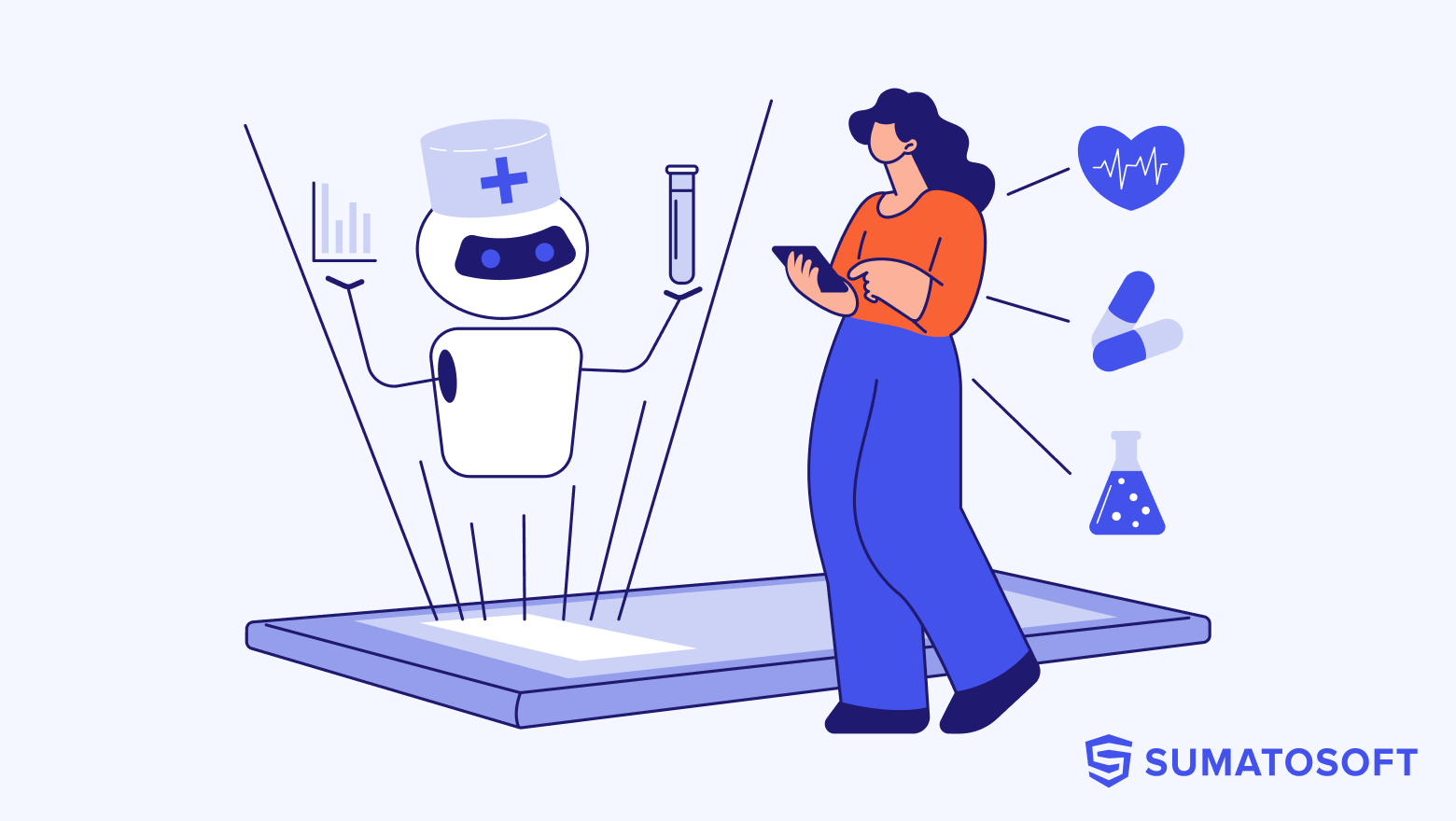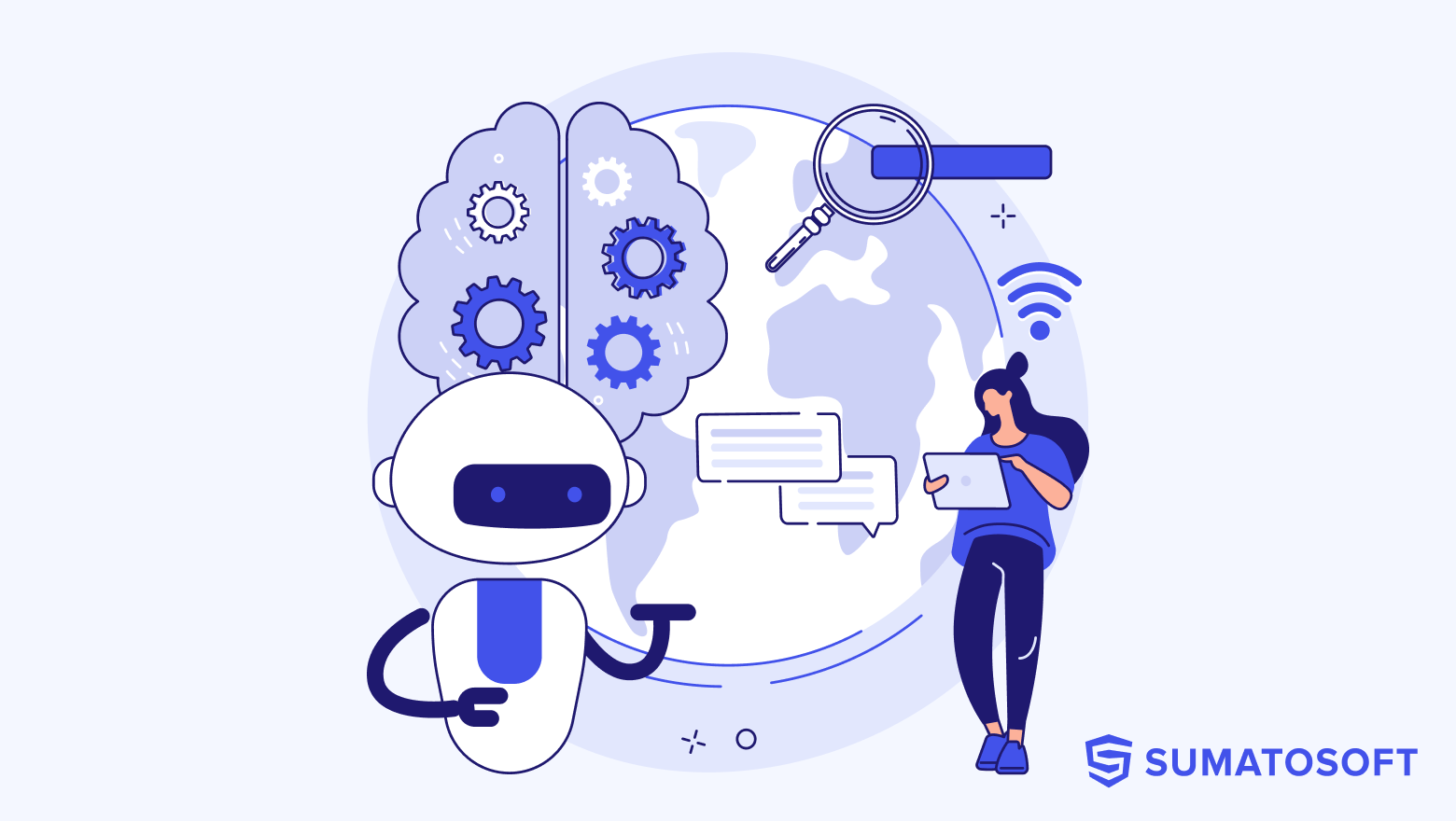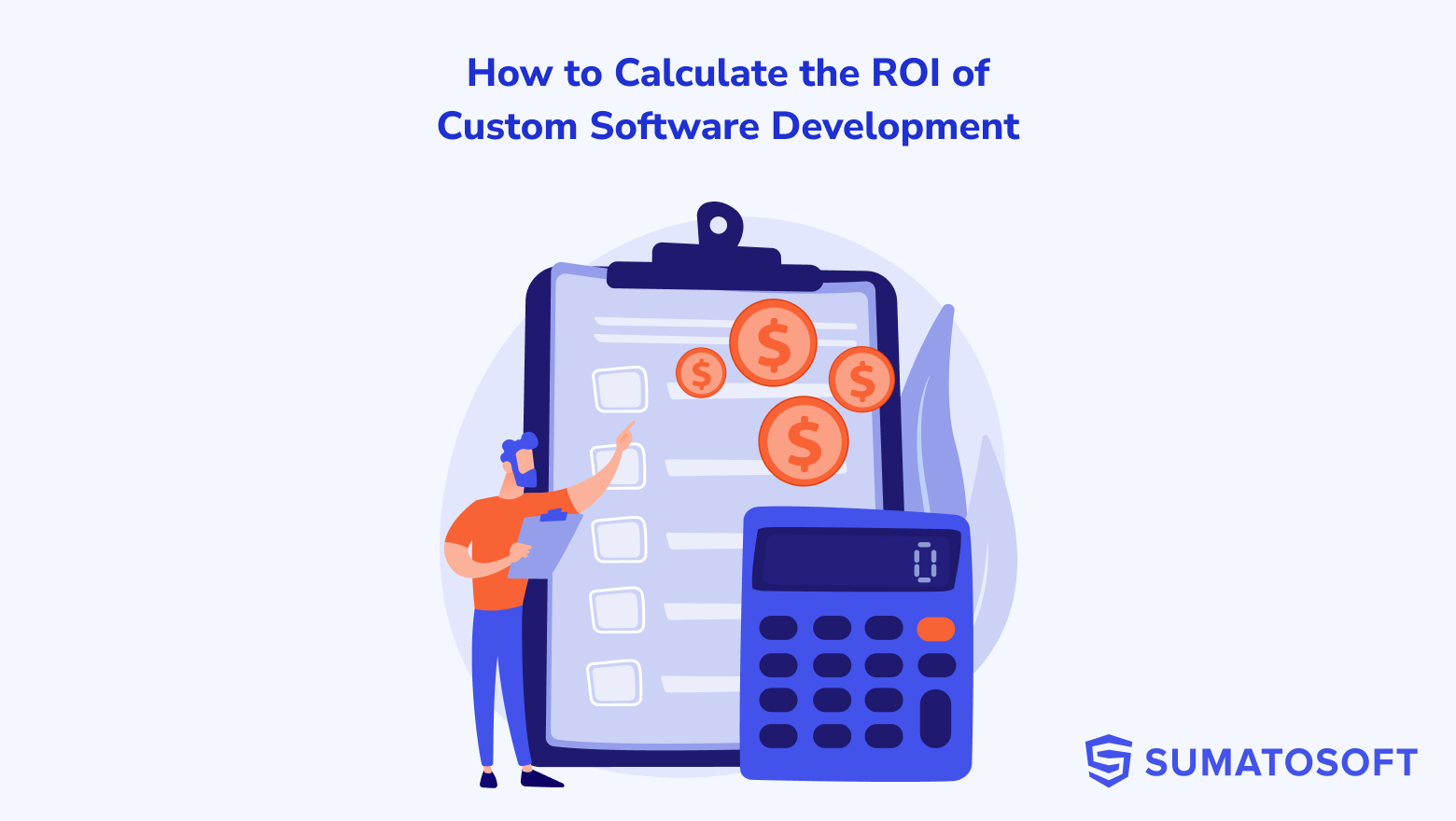Top Choice: 8 Trends in IoT Development for 2025 [Updated]
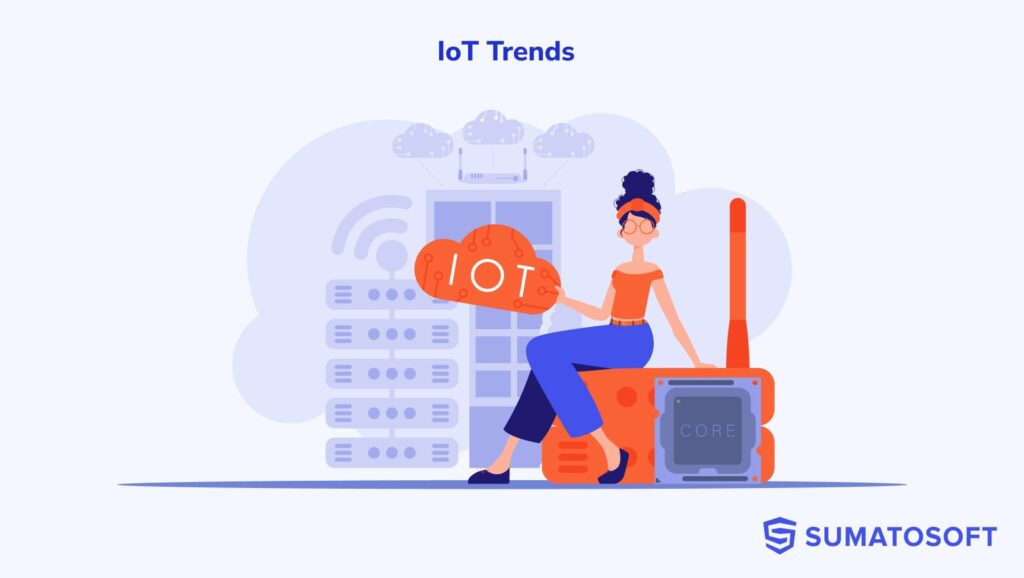
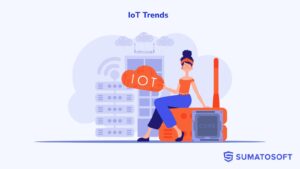
Two decades ago, the Internet of Things seemed to be a futuristic concept of smart gadgets that communicate with one another. The world today has around 17 billion interconnected devices and a $714 billion IoT market size.
The concept has become a reality.
We at SumatoSoft embrace modern technologies by assisting businesses in their adoption through our services. IoT development services take a prominent place among other services. The KPMG global tech report states that IoT is the second most promising emerging technology for business investment.
We continually monitor the IoT landscape and analyze market trends, updating this article annually. 2025 brought many significant changes that I want to explore in this article.
Let’s start.
IoT Drivers in 2025
Any technology doesn’t exist in a vacuum. Some drivers always define whether the technology advances within a nurturing environment or struggles to obtain the financing necessary for a significant leap in development.
Fortunately, the Internet of Things has advanced since the beginning of this century, and there are several reasons for that:
2010 – Present: Growing Demand for IoT in the Healthcare Domain
In the early 2010s, the concept of the Internet of Medical Things (IoMT) started gaining attention. The world saw the first fitness tracker, Fitbit, which was a first-of-its-kind personal healthcare device.
Since then, the healthcare industry has required just more from IoT: advanced remote patient monitoring systems, smart pills, connected inhalers, real-time health data collection, telehealth services, and more. By 2021, the remote patient monitoring market alone grew to $39 billion.
2010 – Present: Significant Investments in Smart Cities
The IoT market saw even more investments in the 2010s, when the concept of Smart Cities gained government and public attention:
- The U.S. government supported smart city development through programs like the American Recovery and Reinvestment Act (ARRA) and new initiatives like the Smart City Challenge from the Department of Transportation.
- Collaboration between the public and private companies began, when tech giants like IBM, Cisco, Microsoft, and others partnered with cities to deploy smart technologies. This attracted significant investments: Cisco investments in IoT reached $300 million in 2019, Intel – $100 million over five years, and Google bought Nest Labs for $3.2 billion.
- The European Union launched the Horizon 2020 program with a $80 billion budget to fund numerous smart city projects, such as Barcelona, Amsterdam, and Copenhagen.
2013 – Present: AI Development
Significant efforts were made to develop and implement AI and IoT long before ChatGPT introduced its market disruption in 2022. Tesla has been developing its autopilot since 2013, Google introduced its self-driving car Waymo in 2018, Microsoft invested $5 billion in IoT and intelligent edge technologies over 5 years from 2018. Back in 2015, enterprise-level IoT systems like GE Predix or Siemens MindSphere that offered AI opportunities successfully entered the market.
Interest and investments in the AI and IoT duet just ramped up even more in 2022. This fruitful cooperation will be a lasting one.
2015 – Present: Sustainability and Energy Efficiency Topics
September 24, 2015, New York City, US
The United Nations adopted the 2030 Agenda for Sustainable Development, including 17 Sustainable Development Goals (SDGs).
December 12, 2015, Paris, France.
196 countries adopted the Paris Agreement, committing to limit global warming below 2 degrees Celsius above pre-industrial levels.
These two events shifted the focus of developed countries toward energy efficiency and renewable energy as key components of sustainability.
As of 2022, worldwide investments in sustainability amounted to $30.3 trillion. The lion’s share of these investments was in IoT technologies like smart grids, smart irrigation systems, and precise farming technologies.
2019 – Present: Advancements in 5G Technology
Low data transfer speed and high latency challenges limited the implementation of IoT. It changed in 2019 with the launch of the first commercial 5G services that overcame these challenges.
Since then, 5G technology has rapidly conquered the IoT landscape when healthcare, autonomous vehicles, manufacturing, and entertainment companies started to adopt it. By 2023, 5G networks had been deployed in over 60 countries, with significant investments from both private and public sectors to expand coverage and develop 5G-enabled devices and applications.
2020 – 2023: COVID-19 Pandemic
The COVID-19 pandemic posed an acute challenge to the world: the need to operate remotely.
Healthcare providers were required to reduce hospital visits – so they referred to telemedicine. Industries were expected to maintain production despite travel restrictions and social distancing – so they referred to remote machinery monitoring and predictive maintenance. The retail sector must minimize human contact, so they invested in contactless delivery systems and contactless payments.
8 Ongoing and Emerging Trends In the IoT Market
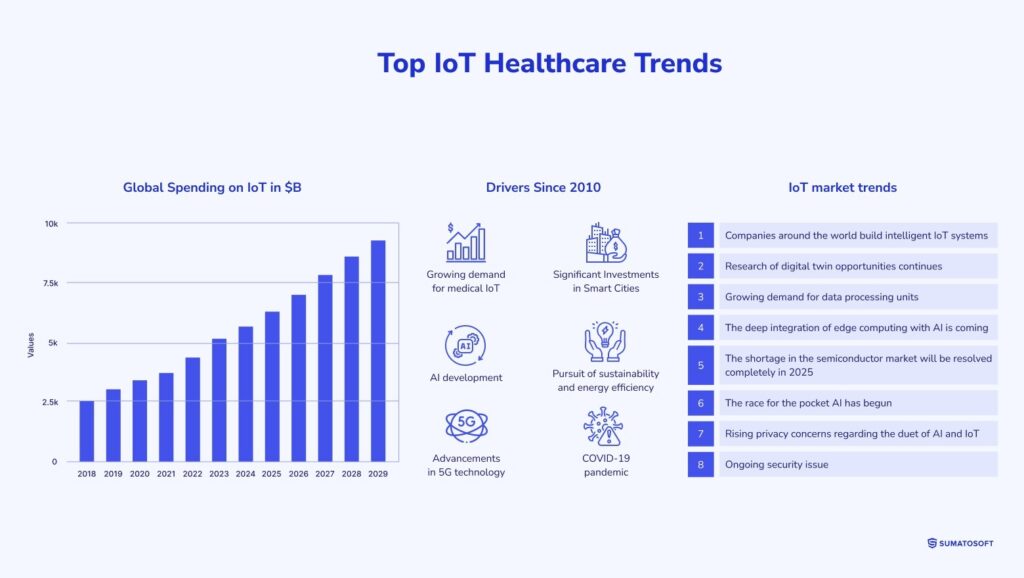
Trend 1: Companies Around the World Build Intelligent IoT Systems
With ChatGPT released, its convergence with the Internet of Things is a hot topic across all industries. By 2025, IoT is expected to generate 80 zettabytes of data annually, equivalent to 3.1 billion years of continuous HD video playback. AI, in turn, is expected to process and use this data.
Nowadays, businesses are discovering new ways to combine IoT and AI capabilities. I can’t say that serious progress has been achieved because old-school predictive maintenance is responsible for about two-thirds of all IoT use cases.
Still, new combinations of AI and IoT are coming.
Examples:
- Qualcomm has introduced a new AI-powered IoT and industrial platform, the Qualcomm RB3 Gen 2 Platform, and the QCC730 SoC Wi-Fi solution at Embedded World 2024. This platform features a 10x increase in AI processing power for modern applications in robotics, drones, connected networks of devices, and AI edge computing boxes, while new Wi-Fi solutions aim to improve power efficiency and device connectivity.
- The IEEE 10th World Forum on IoT in Canada focused on the theme “Unleashing the power of IoT with AI.” It showcased existing integrations and explored new combinations of technologies.
Trend 2: Research of Digital Twin Opportunities Continues
Digital twins are the next promising step in predictive maintenance for any high-cost physical item. While still limited mainly by virtual models of spaceships, aircraft, and smart cities, the concept of digital twins looks appealing to businesses and huge corporations with more implementations in smart manufacturing coming in.
Examples:
- McKinsey research shows that 70% of C-suite technology executives at large enterprises are already exploring and investing in digital twins. Still, it’s more likely about exploring rather than investing, but the interest in this concept keeps growing, especially thanks to the success of the preventive maintenance opportunities.
- AWS and Bosch Digital Twin Industries are two companies that continue to explore further advancement and implementations for the digital twins.
Trend 3: Growing Demand for Data Processing Units
This trend concerns graphical processing units (GPUs). The global market for GPUs was valued at approximately $65.3 billion in 2024 and is expected to grow to $274.2 billion by 2029.
From our perspective, these estimations are quite moderate. The demand for GPUs had already demonstrated significant growth before 2022, determined by two factors: implementations of edge computing in manufacturing, smart cities, automotive, and other industries, and the prosperity of the gaming and streaming industry.
2022 brings a new drive for GPU demand: a generative AI.
It’s worth noting that generative AI requires immense computing power compared to previous tasks GPU worked with.
To visualize the difference, we can imagine the computing capacities used in gaming, streaming, and edge computing as garden hoses and required computing for these tasks as a swimming pool. The more hoses we take, the faster we can fill up an entire swimming pool.
Well, training complex AI models for generative AI is like trying to fill up a giant lake with the help of garden hoses. It requires specialized, high-performance processing units to do so.
Examples:
- NVIDIA reported a record $27 billion in revenue in 2022 with another record in 2023 as well. Before ChatGPT’s introduction in 2022, the revenue number was much lower, at $16 billion in 2021. Such astonishing growth for an established company is driven by one simple reason: NVIDIA’s H100 GPUs are crucial in AI model training.
- Intel entered the market in 2024 with its Arc series of GPUs and aggressive price strategy. The cost of their action is quite depressing for the company with the stock price dropping 43% in August 2024 due to ongoing concerns about its ability to compete in the AI GPU market. Nevertheless, the GPU market has 3 major players now: NVIDIA, AMD, and Intel.
Trend 4: The Deep Integration of Edge Computing With AI Is Coming
Cloud computing, when all data are sent to the cloud, has always been a standard method of storing and processing extensive data from IoT devices.
It has changed to meet the needs of the newest IoT implementations, such as autonomous vehicles, smart factories, energy management, smart cities, etc. These areas require high response speed, opportunity to operate offline, and real-time decision-making from the systems. AI-powered edge computing allows to meet these requirements.
Major companies are actively investing in edge AI technology: AI chipsets are becoming smaller in size while growing in power, edge gateways come with embedded AI chipsets in them, new AI-ready IoT platforms are appearing.
We expect both the hardware market with edge servers, advanced processors, connectivity modules and the software market with edge AI capabilities to keep growing due to the increasing adoption of edge computing.
Examples:
- At SPS in November 2023, Siemens presented its SIMATIC IPC520A Box PC, which is embedded with 6-core NVIDIA Carmel and NVIDIA Jetson Xavier NX GPU for high-performance AI computing at the edge.
- NVIDE actively develops its CUDA and the NVIDIA AI Enterprise suites that are essential for deploying AI at the edge, enabling real-time analytics.
- At the Embedded World 2024 conference in Germany, Qualcomm introduced RB3 Gen 2, a new AI-ready IoT platform, which is a comprehensive hardware and software solution designed for IoT and embedded applications.
- Intel invests in edge AI through its OpenVINO toolkit, Google leverages its expertise in AI through services like Google Cloud AI and TensorFlow, which support edge computing applications.
Trend 5: The Shortage in the Semiconductor Market Will Be Resolved Completely in 2025
The COVID-19 pandemic led to a sudden surge in demand for electronic devices, both for personal use and for companies’ shift to remote operations. This demand quickly consumed the available semiconductor supply, which is necessary for manufacturing IoT devices.
From 2020 to 2023, we saw a stable depletion of excess inventory, an increase in semiconductor manufacturers’ revenue, a growing demand for semiconductors, and an ongoing deficit of this basic electronic component. The global semiconductor market grew from $412 billion in 2019 to $630 billion in 2023.
Demand growth was fueled even more by the introduction of generative AI in 2022, which requires enormous computational power. The U.S. and EU governments launched several acts to support domestic semiconductor manufacturing and research and mobilize investments into new facilities.
The supply chain is stabilizing nowadays, and we expect the semiconductor shortage to be fully resolved by 2025.
Examples:
- The U.S. has enacted the CHIPS and Science Act, which aims to support domestic semiconductor manufacturing and research with $50 billion. Similarly, the EU has launched the European Chips Act to mobilize $43 billion in private and public investment by 2030 to achieve the same goal.
- 4 core manufacturers are investing more than $60 billion in building new semiconductor fabrication plants around the globe: Intel, Taiwan Semiconductor Manufacturing Company, Samsung, GlobalFoundries.
- The revenue growth of TSMC, which holds a 56% market share, has finally slowed down after doubling within three years from 2019 to 2022.
Trend 6: The Race For the Pocket AI Has Begun
This is a composite trend derived from several factors: advancements in semiconductor technology, miniaturization of high-performance processors, and improvements in energy efficiency.
The result is small, pocket-sized smart gadgets with integrated AI opportunities. These devices are designed to offer real-time AI processing power in daily life. Consumer demand for portable AI solutions is still in its infancy, but the growing interest in such devices will create a vast consumer market in the coming years.
Companies like Apple, Google, Samsung, and smaller innovators are vying to lead in the space by introducing AI capabilities in existing devices and developing new ones.
Still, there is a lot to be done. The ongoing issues include high battery drain, slow response times, poor performance, missing features, proneness to overheating, inaccuracy and hallucination. Although the coming usable pocket AI devices will likely be smartphones, within this trend, we are speaking about distinct AI devices that specialize in AI capabilities rather than having it as an additional nice option.
Examples:
- At CES 2024, the Rabbit R1 was introduced. It’s a new AI-powered device that operates with a custom OS and enables it to execute complex tasks such as booking travel, ordering food, routing, and more. The device has a rotating camera, non-touchscreen display, Wi-Fi, and cellular connectivity.
- Back in 2023, the Humane startup announced its AI Pin device, which was supposed to become a personal AI-powered assistant. The device received much criticism for its immaturity, poor performance, and inconvenience.
- Apple integrates generative AI into its newest devices, Google Pixel 8 leverages AI for advanced photography and photo editing features, and Meta developed Ray-Ban Meta Smart Glasses with hands-free AI-powered functionalities.
Trend 7: Rising Privacy Concerns Regarding the Duet of AI and IoT
How to ethically implement modern technologies?
AI and IoT together are capable of creating smarter, more autonomous systems that can greatly enhance and simplify our daily lives. The question here is how to prevent the misuse of personal information that IoT devices need to operate.
In the 2010s, several new fundamental documents were introduced to protect individual’s personal data and privacy: GDPR in the European Economic Area, CCPA and the New York SHIELD Act in the U.S. In the 2020s, privacy regulations are evolving with the wide adoption of AI among different IoT networks. From the Biden-Harris administration’s Executive Order 14110 to the political agreement reached on the EU’s AI Act, governments around the world are taking steps to regulate AI technologies.
For us as software developers, this means that we must keep abreast of evolving privacy and security measures to develop AI-powered IoT systems that comply with local laws and regulations.
We also observe an increasing consumer awareness and concern about privacy. Organizations like IAPP, KPMG, the University of Queensland, Pew Research Center have already conducted several studies with quite similar findings: depending on the study, 56% to 81% of respondents globally agree that AI poses a significant threat to their privacy. Consumers think the information collected by AI companies will be used in ways people are uncomfortable with as well as in ways that were not originally intended.
I see the company’s ability to cope with this privacy concern as a significant competitive advantage.
Examples:
- At the 2024 Worldwide Developers Conference, Apple announced plans to integrate its own proprietary AI, “Apple Intelligence,” into its devices. Apple Intelligence is expected to become a full-fledged assistant in a person’s daily deals, accessing every piece of information on the device. They plan to use on-device AI processing to ensure privacy without transferring the data and queries to cloud servers.
Trend 8: Ongoing Security Issue
This is a never-ending issue that I have been discussing since 2012 when we at SumatoSoft started to provide IoT development services. The latest worth-reading research on this topic is the whitepaper “The high cost of doing nothing” from the Asimily company that specializes in securing IoT devices.
Issues that existed 10 years ago are still relevant today: unreliable default passwords are still the main reason for IoT security breaches, devices feature outdated software and hardware, and companies ignore practices like regular security patching, network segmentation, and real-time monitoring. All that leads to billions of dollars in loss, disrupted operations, and lost reputations.
The absence of standardization in IoT device security complicates things further. We have definitely seen an improvement in this area with the introduction of standards and frameworks like the NIST cybersecurity framework, ETSI EN 303 645, OWASP IoT TopTen, Cybersecurity law, etc. Still, this is an ongoing issue that will continue to be present in IoT trends in the coming years.
Examples:
- GitHub attack in 2018, Dyn DNS attack in 2016, Mirai Botnet Attack in 2016, Spamhaus attack in 2013, Estonia cyberattacks in 2007 – these are just the most famous DDoS attacks.
- The coding capabilities of generative AI pose an additional challenge to securing IoT devices since tools like GitHub Copilot may inadvertently suggest code that contains security vulnerabilities.
SumatoSoft’s Role in IoT Trends
SumatoSoft has been delivering IoT software development services since 2012, delivering custom enterprise software and developing MVPs for startups to gain a competitive advantage and improve their efficiency, effectiveness, and profit through business digitalization.
SumatoSoft offers industry-focused IoT solutions in multiple domains. They include:
- the Internet of Things in logistics;
- IoT solutions for smart cities;
- the Internet of Things in climate change;
- IoT development for fleet management;
- healthcare IoT development;
- banking IoT development;
- retail;
- manufacturing;
- automotive.
The SumatoSoft team has built 250 custom software solutions for 27 countries for 11 industries. After more than 12 years on the market, the company became a reliable technical partner to its Clients, demonstrating a 98% Client satisfaction rate with the quality of services they provide. Contact us to get a free quote for your project.
Let’s start
If you have any questions, email us info@sumatosoft.com

